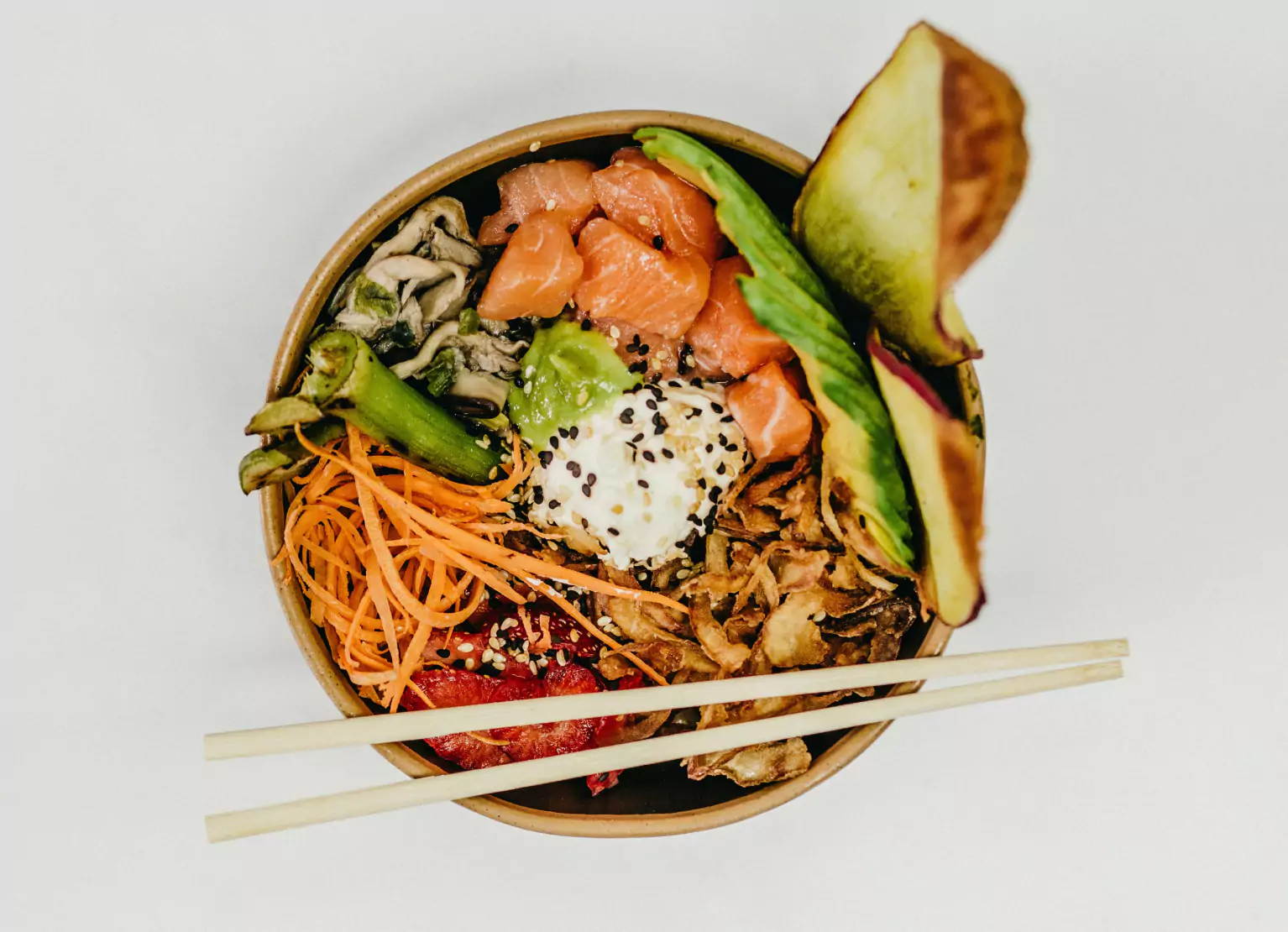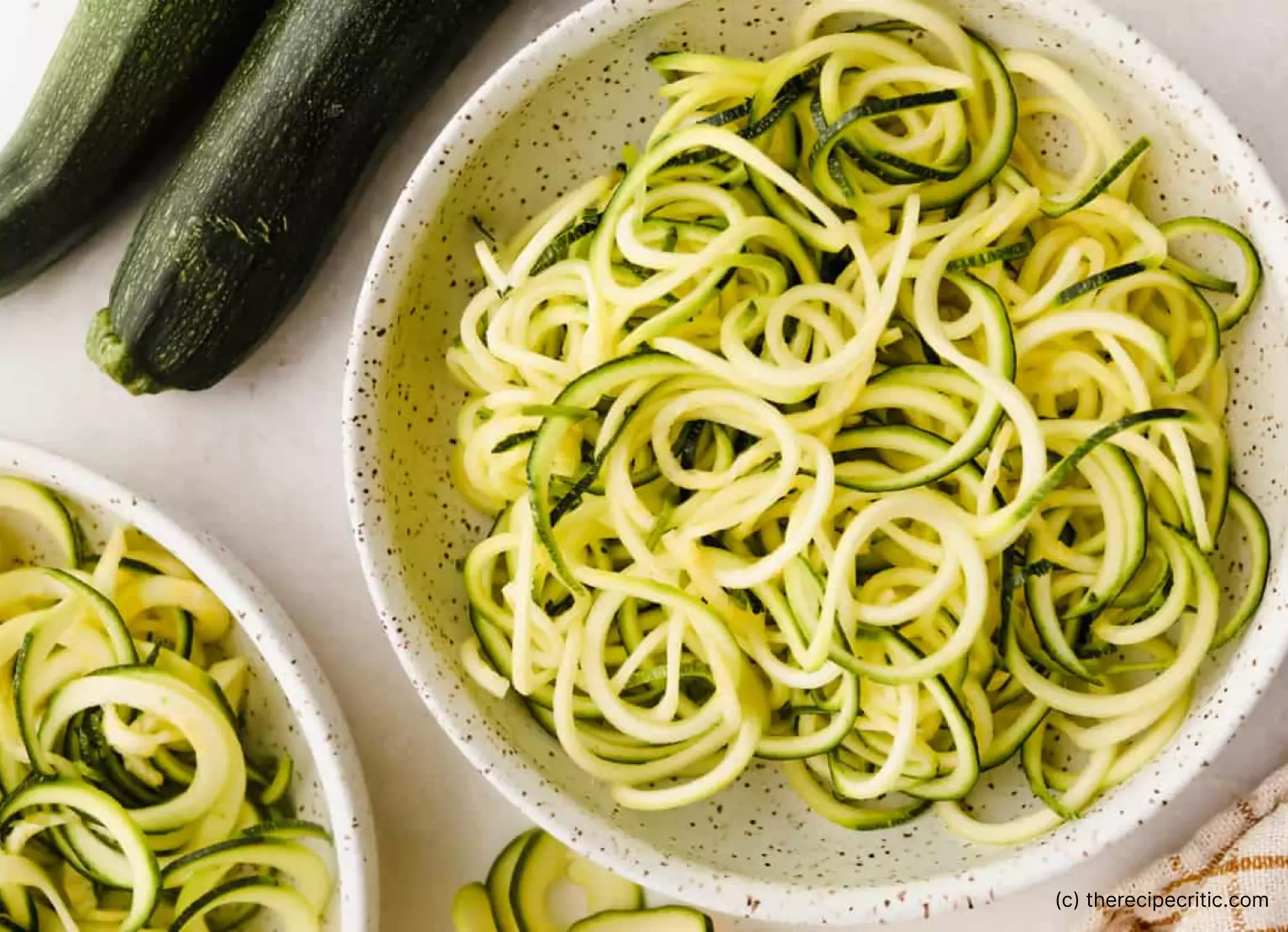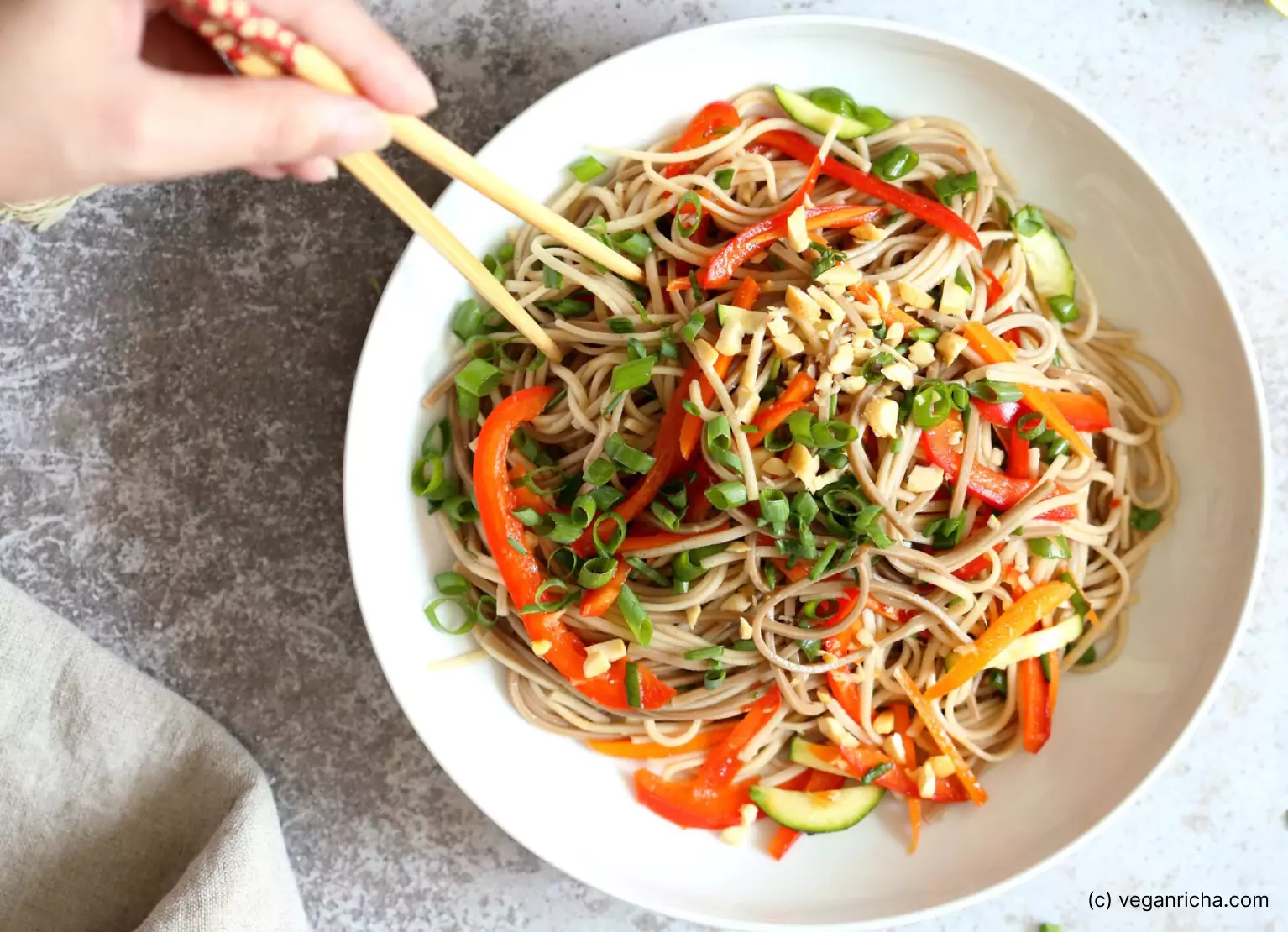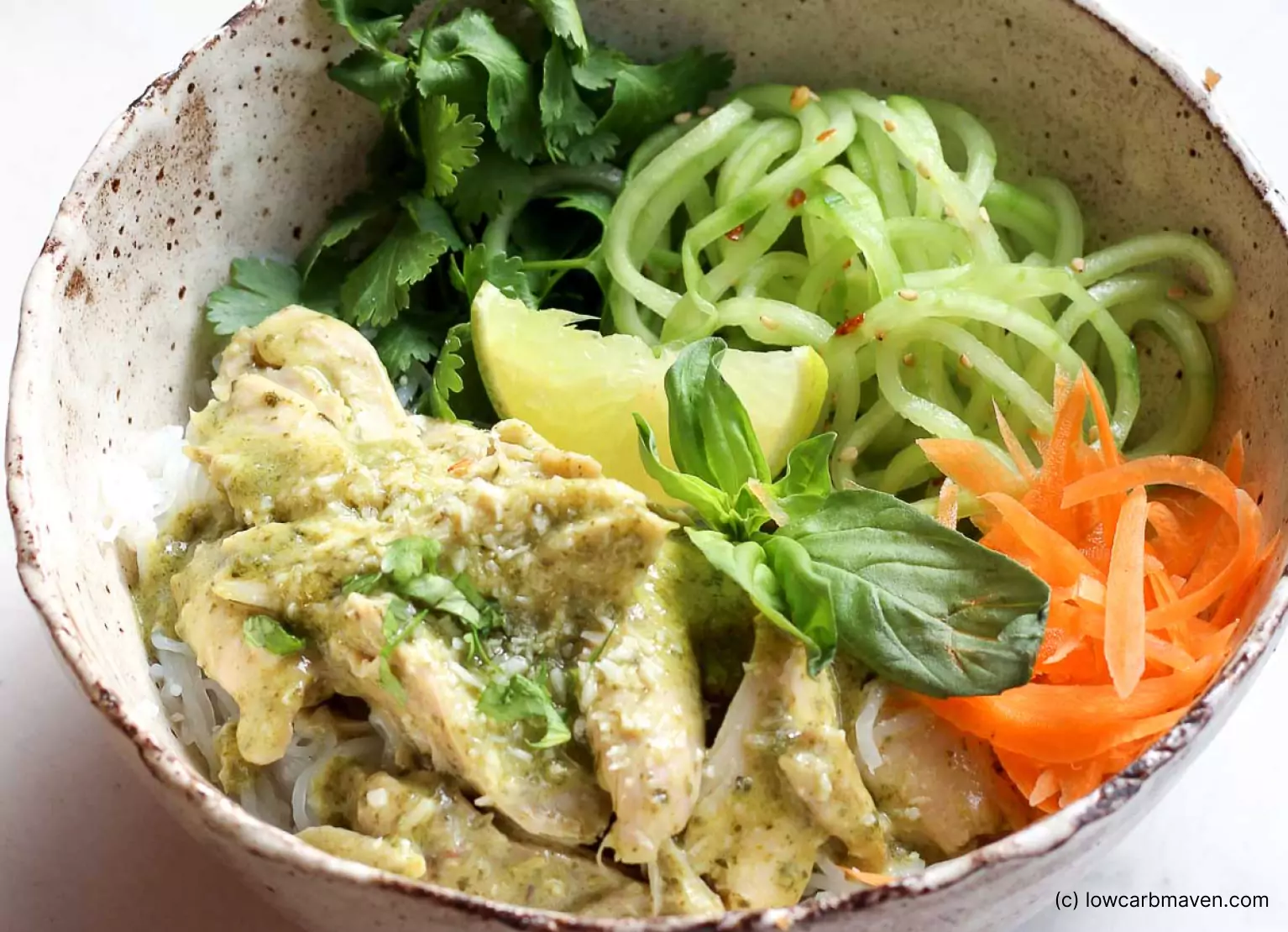Are Noodle Bowls Healthy? [+ 5 Delicious Noodle Bowl Recipes]

Key Takeways
Noodles are a dietary staple in many cuisines worldwide. And while they can be a very versatile ingredient, they’re not all made equally. From ramen noodles to rice noodles to chickpea pasta, there are dozens of options and even more unique and delicious ways to prepare each type.
Most types of noodles are a great source of carbohydrates, the body’s primary energy source. Still, each type can vary significantly in terms of nutritional value.
You may typically think of them as a high carb and high-calorie food, but many noodle varieties are high in fiber and other nutrients and can play an essential role in a healthy, balanced diet,
Let’s go through a few of the healthiest types of noodles to include in your diet and see how to make them into a nutritious meal.
What Makes a Healthy Noodle

When we think of noodles, classic Italian spaghetti may be the first thing that comes to mind. The drawback of traditional spaghetti and many of the noodle varieties used in Asian cooking (such as rice noodles) is that they are typically made from refined flour.
Some studies suggest that consuming refined carbohydrates can increase the risk of cardiovascular conditions. Because these simple carbohydrates are also easily digestible, they may also lead to more significant blood glucose spikes.
That’s why paying attention to what ingredients go into your noodles is essential, especially if you’re at risk for diabetes or other health conditions.
Consider options made with whole grain flour when looking for a healthy option to add to your favorite noodle bowl. They're often higher in fiber and usually contain more vitamins and minerals than pasta made from refined flour. Adding more whole grains to your diet is also linked to lower mortality.
Noodle varieties made out of vegetables and legumes are also growing in popularity. Veggie noodles can be a great low-calorie, high-fiber option. And legume-based noodles like chickpea or lentil pasta can be much higher in protein while also being a great gluten-free option.
Now that we have a better idea of what to look for in a healthy noodle let’s get into a few of the most nutritious and practical options.

Whole-Grain Pasta
If you’re a pasta lover, you may not be too excited at the prospect of swapping out spaghetti noodles for spiralized vegetables.
Luckily, whole-grain pasta (such as quinoa pasta or whole-wheat pasta) is one of the most similar alternatives to traditional pasta. It contains higher levels of fiber, B vitamins, iron, and many other essential nutrients that are typically stripped from refined white flour options.
In one study, whole-grain pasta was found to promote fullness and reduce hunger, making it a good option for controlling excess snacking and cravings.
Plus, increasing fiber consumption can support gut health, help blunt blood sugar spikes, and lower inflammation in the body.
Homemade Zucchini Noodles

Zucchini noodles, spaghetti squash noodles, or any other noodles derived from vegetables are a great way to increase your vegetable intake while enjoying other ingredients you’d typically add to a pasta dish. Even better, you can find these sorts of noodles in the freezer section of many supermarkets if you don’t want to make them from scratch!
Vegetables like zucchini and other types of squash are low in calories and low in carbs. They are also a source of some B vitamins, potassium, and fiber.
Legume-based Noodles
Nowadays, there are noodles made out of all the legumes you can think of. From chickpeas to lentils and even black beans, there are so many interesting flavor combinations and nutritional benefits to be enjoyed from these legume-based noodles.
One of the most common varieties in most supermarkets is chickpea pasta. It has a taste profile similar to traditional pasta noodles and has links with weight management and insulin regulation.
Lentil noodles contain a similar nutrient profile to chickpea noodles. They are just as versatile, with high fiber, iron, and magnesium levels. Lentils are also high in polyphenols, which have been observed to lower the risk of diabetes, obesity, and certain cancers.
Consuming carbohydrates packed with fiber and protein is a great way to prevent blood sugar spikes, making legume-based pasta a healthy, balanced option.
Soba Noodles

Soba noodles are made with buckwheat flour, which is high in nutrients like thiamin and manganese, as well as protein and fiber. Some research suggests that buckwheat may benefit glucose levels, especially in individuals with diabetes. However, more research is still needed to determine the exact impact.
These noodles are another great option for anyone with gluten intolerance. You'd typically find them in Japanese cooking, but you can also use them in other types of salad or noodle bowls.
Shirataki Noodles
Shirataki noodles, which you might recognize as “Miracle Noodles,” are low-carb noodles made from a fiber known as konjac glucomannan.
As the konjac plant is grown in Japan and other southeast Asian countries, Shirataki noodles are often associated with Asian cooking. However, they’re versatile and can be used creatively in any noodle dish.
These noodles are popular in the keto diet due to their low carb content. They may support healthy glucose levels and help lower cholesterol and high blood pressure.
So, Are Noodle Bowls Healthy?
Can we add a little section here on noodle bowls specifically. For example, if you’re picking healthy noodles… is the noodle bowl automatically healthy? What makes it unhealthy even if you pick a good noodle? Any stats/ figures we can point to? I think it would be a good segway into the next section + we’re answering that currently trendy question!
Most noodles are healthy to consume in moderation, and getting plenty of protein, fiber, complex carbohydrates, and vitamins and minerals should be your goal when putting together a noodle bowl. For individuals with high blood sugar, it may be helpful to pair your noodles with other macronutrients to avoid big glucose spikes.
Topping your noodles with a high quality source of protein and adding in some crunchy veggies can support an optimal blood sugar response and provide some of the vital nutrients you need for a balanced diet.
Let’s have a look at a few healthy recipes you can try if you want to add these noodles to your diet.
5 Healthy Noodle Bowl Ideas
Now that you have a better idea about which noodles you might want to add to your diet let’s explore some tasty ways to prepare them. Here are five of our favorite easy recipes to turn different types of noodles into a nutritious and flavorful meal.
Chicken Chickpea Pasta Bake by Skinny Fitalicious

This pasta dish is similar to baked ziti, swapping white pasta for protein-packed chickpea noodles.
Ingredients
- 8 ounces chickpea pasta
- 1 pound ground chicken breast
- 1/2 cup white onion
- 2 zucchini diced
- 25 ounces marinara sauce, no salt added
- 2 tablespoons Italian seasoning
- 2 tablespoons garlic minced
- 4 tablespoons low moisture mozzarella, shredded
- salt and pepper to taste
Why We Love It
The protein and fiber from the chickpea pasta paired with ground chicken are a great way to increase your protein intake. It also makes for a nutritious, satiating meal that won’t spike your blood sugar.
Toss in some spinach or another leafy green before baking, or pair this dish with a side salad for some extra vitamins and minerals.
Garlic Zucchini Pasta by Inspired Taste
This dish is an excellent alternative if you still want to enjoy the delicious flavors of traditional pasta while also upping your vegetable consumption.
Ingredients
- 4 medium zucchini (about 2 pounds)
- 3 tablespoons extra virgin olive oil
- 1 tablespoon minced garlic (3 to 4 cloves)
- 1/4 to 1/2 teaspoon crushed red pepper flakes (optional)
- 2 medium tomatoes, chopped, see note (about 12 ounces)
- 1/2 cup shredded parmesan cheese, plus more for serving
- 1 cup basil leaves, torn into pieces
- 1 teaspoon cornstarch
- 2 teaspoons cold water
- salt to taste
Why We Love It
Zucchini is high in vitamin C and potassium and can be a great low-carb substitute if you are someone who is following a low-carb diet.
The peels of zucchini and other types of squash have positive antidiabetic properties. Pair zucchini noodles with a high-quality protein source for a fully balanced, nutrient-rich meal.
Cold Soba Noodle Salad by Vegan Richa

If you’re craving umami flavors, this cold noodle salad will hit the spot. Full of colorful vegetables and lots of delicious seasonings, this meal is the perfect way to use up all the vegetables in your fridge and add some extra fiber to your diet.
Ingredients
- Juice of half a lime
- 1 tablespoon minced ginger
- 1 teaspoon sesame oil
- 1.5 tablespoons soy sauce (use tamari for gluten-free)
- 1 tablespoon rice vinegar
- 1.5 tablespoons maple syrup
- 2 teaspoons Asian chile sauce, Sriracha, or other hot sauce to taste
- 7 to 8 ounces soba noodles
- 1 red bell pepper thinly sliced
- 1 cup (128 grams) sliced carrots
- 6 or 7 green onions
- 1 zucchini or cucumber thinly sliced
- Sesame seeds, cilantro/mint (optional), crushed roasted peanuts/cashews (optional) for garnish
- Optional additions: Edamame, baked tofu, other crunchy veggies
Why We Love It
This salad is very customizable and a great way to ensure you’re eating vegetables from all over the color spectrum.
Buckwheat noodles are high in protein and fiber, but pairing this with seasoned tofu or chicken will balance the meal and regulate your glucose levels.
Greek Pasta Salad by This Delicious House
This Greek pasta salad is another way to “eat the rainbow” while boosting fiber. It also helps add extra vitamins to your diet and is full of delicious, classic Greek flavors.
Ingredients
- 10 ounces whole-wheat rotini pasta
- 1 yellow bell pepper, largely diced
- 1 orange bell pepper, largely diced
- 1 English cucumber, peeled, seeded, and largely diced
- ⅓ cup red onion, diced
- 10 ounces cherry tomatoes, halved
- ½ cup Kalamata olives, chopped
- ½ cup feta cheese crumbles
- ½ cup olive oil
- ¼ cup red wine vinegar
- 1 teaspoon dried oregano
- 2 cloves garlic, minced
- 1 teaspoon dijon mustard
- ½ teaspoon kosher salt
- ¼ teaspoon black pepper
Why We Love It
Whole wheat pasta is a better alternative to refined noodles due to its higher fiber content. Pairing this recipe with a red wine vinegar dressing is also a great way to prevent blood sugar levels from fluctuating.
Toss in a high-quality protein source such as chicken or tempeh for a plant-based alternative to make this dish even more satiating.
Coconut Basil Chicken Shirataki Noodle Bowl by Low Carb Maven

If you’re looking for a unique way to prepare Shirataki noodles, this is it! This coconut basil recipe is delicious, high in protein, and easy to throw together any day of the week.
Ingredients
- 1 pound raw chicken breast cut thinly
- 10 to 15 large whole basil leaves
- 1 tablespoon coconut oil
- 1 can full-fat coconut milk (about 13 ounces)
- 8 ounces cucumber, spiralized and drained
- 2 packages Miracle Noodles, rinsed and squeezed gently
- Sweet and Sour sauce
- 1/4 cup lime juice
- 2 tablespoons fish sauce
- 2 tablespoons sweetener
- 1/2 teaspoon toasted sesame oil
- Cilantro
- Basil
- Mint
- Red pepper flakes
- Sesame seeds
- Shredded toasted coconut
Why We Love It
This recipe contains high-quality protein from the chicken and is full of satiating fiber from the noodles.
Add a few other chopped veggies to increase this meal's vitamin and mineral content, and enjoy!
Find the right Nutrisense programto turn insight into progress.
Go Beyond Glucose Data with Nutrisense
Your glucose can significantly impact how your body feels and functions. That’s why stable levels are an important factor in supporting overall wellbeing. But viewing glucose isn't enough. Nutrisense, you’ll be able to learn how to use your body's data to make informed lifestyle choices that support healthy living.
One-to-one coaching
Sign up to access insurance-covered video calls to work with a glucose expert: a personal registered dietitian or certified nutritionist who will help tailor your lifestyle and diet to your goals.
Monitor and measure what matters
With the Nutrisense CGM Program, you can monitor your glucose with health tech like glucose biosensors and continuous glucose monitor (CGM)s, and analyze the trends over time with the Nutrisense App. This will help you make the most informed choices about the foods you consume and their impact on your health.
Find your best fit
Ready to take the first step? Start with our quiz to find the right Nutrisense program to help you take control.

Heather is a Registered and Licensed Dietitian Nutritionist (RDN, LDN), subject matter expert, and technical writer, with a master's degree in nutrition science from Bastyr University. She has a specialty in neuroendocrinology and has been working in the field of nutrition—including nutrition research, education, medical writing, and clinical integrative and functional nutrition—for over 15 years.




